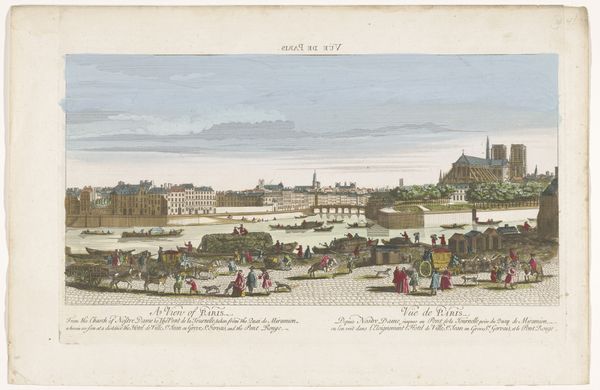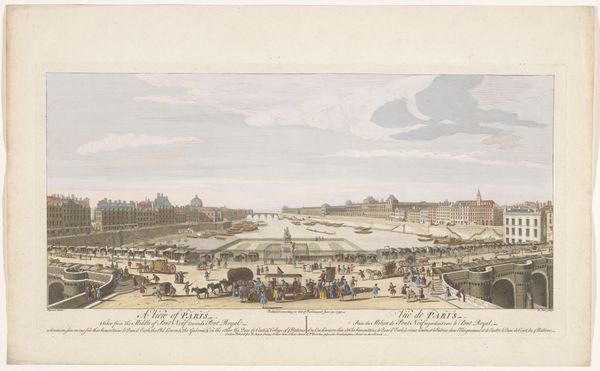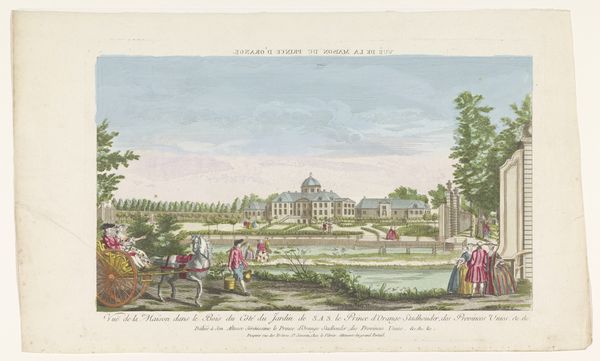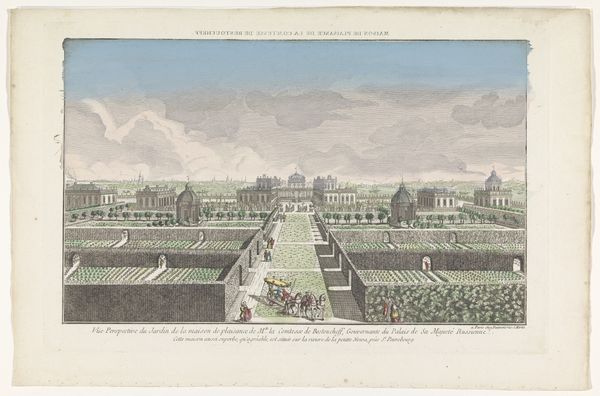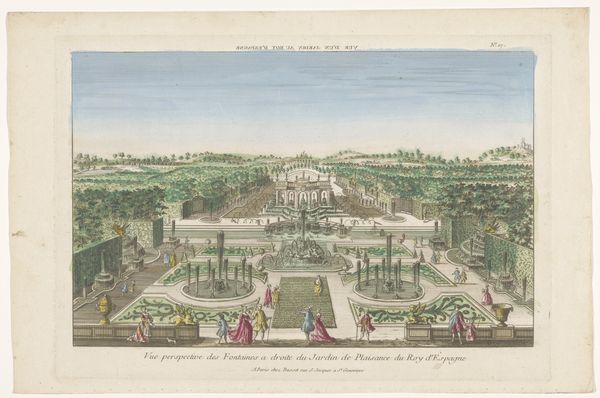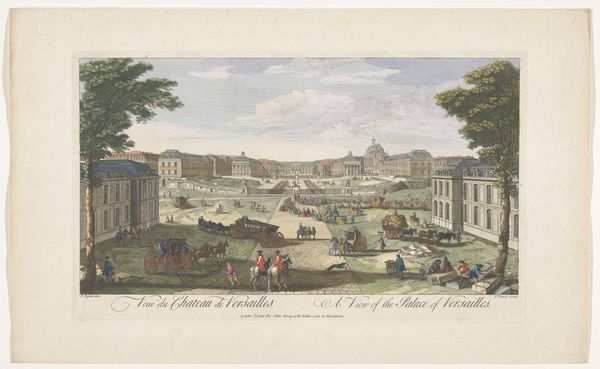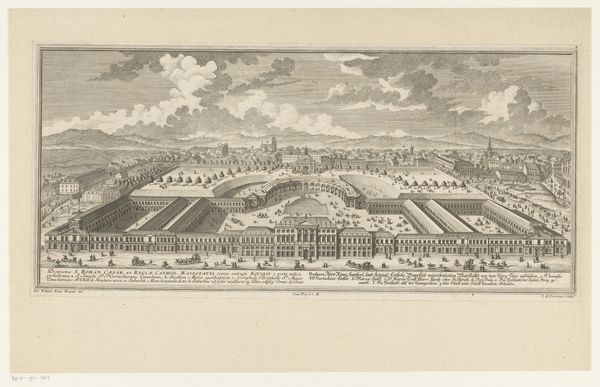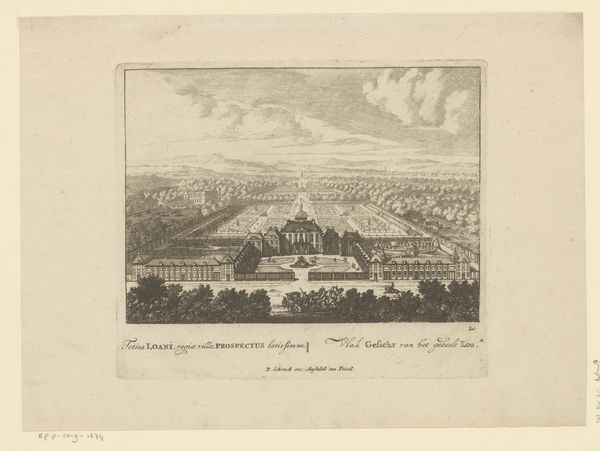
Gezicht op de voorzijde van het Château de Chantilly after 1722
0:00
0:00
print, engraving
#
water colours
# print
#
landscape
#
coloured pencil
#
cityscape
#
engraving
#
rococo
Dimensions: height 210 mm, width 316 mm, height 250 mm, width 373 mm
Copyright: Rijks Museum: Open Domain
Editor: Here we have "View of the Façade of the Château de Chantilly," an engraving made after 1722 by Nicolas Jean Baptiste Poilly. It's a bustling scene, lots of activity around this grand estate. I'm struck by how meticulously ordered everything seems. What do you see in this piece, especially considering its historical context? Curator: Well, at first glance, we see a Rococo celebration of wealth and power. But let’s not just accept that. Who had access to this ordered, beautified world? The aristocracy, certainly. The print itself performs a kind of gatekeeping, controlling how Chantilly and the lifestyle it represents were consumed. What stories are missing from this carefully constructed vista? Editor: You mean, who isn't represented? The servants, the laborers who kept the estate running... they're invisible. Curator: Exactly. This image idealizes a hierarchy. We might even consider how landscape paintings and prints, particularly those depicting private estates, acted as a tool of social control. What do you make of the framing device around the central image? Editor: It almost looks like we're peering through a window. So it creates a sense of distance, reinforces the idea of the viewer as an outsider looking in? Curator: Precisely. Consider how the perspective flattens the lived experiences of those excluded, turning them into spectacle. It asks us to appreciate the aesthetic and technical skill, perhaps, without questioning its social function. Editor: It's easy to get lost in the beauty of it all, the architectural details. It's a good reminder to think critically about whose stories are being told and whose are being left out. Curator: Agreed. Recognizing those power dynamics within seemingly innocuous scenes allows us to have a more informed and meaningful understanding of history.
Comments
No comments
Be the first to comment and join the conversation on the ultimate creative platform.

